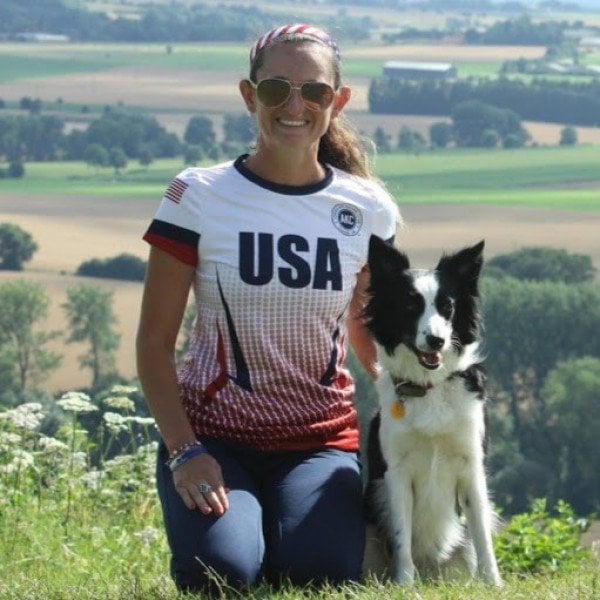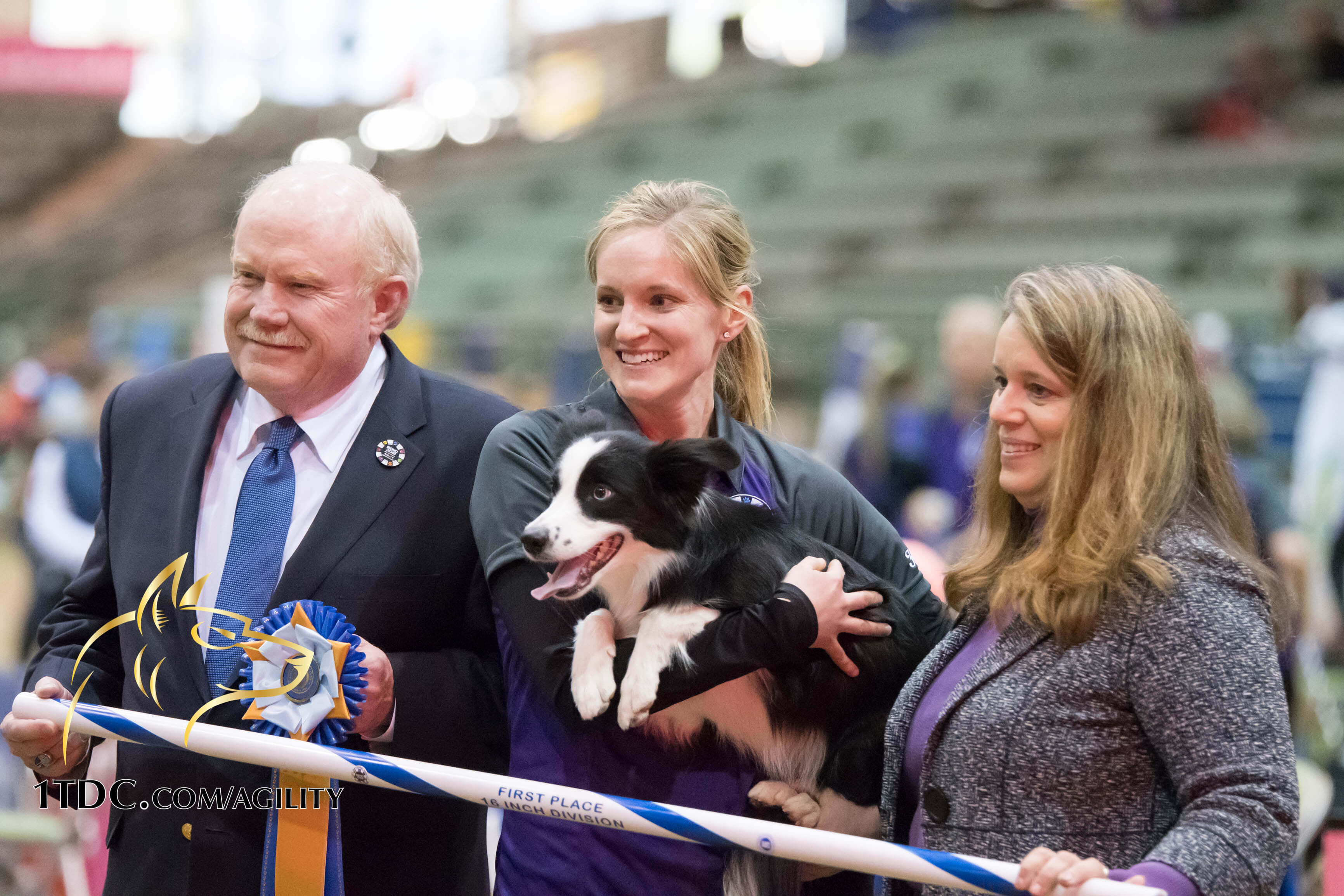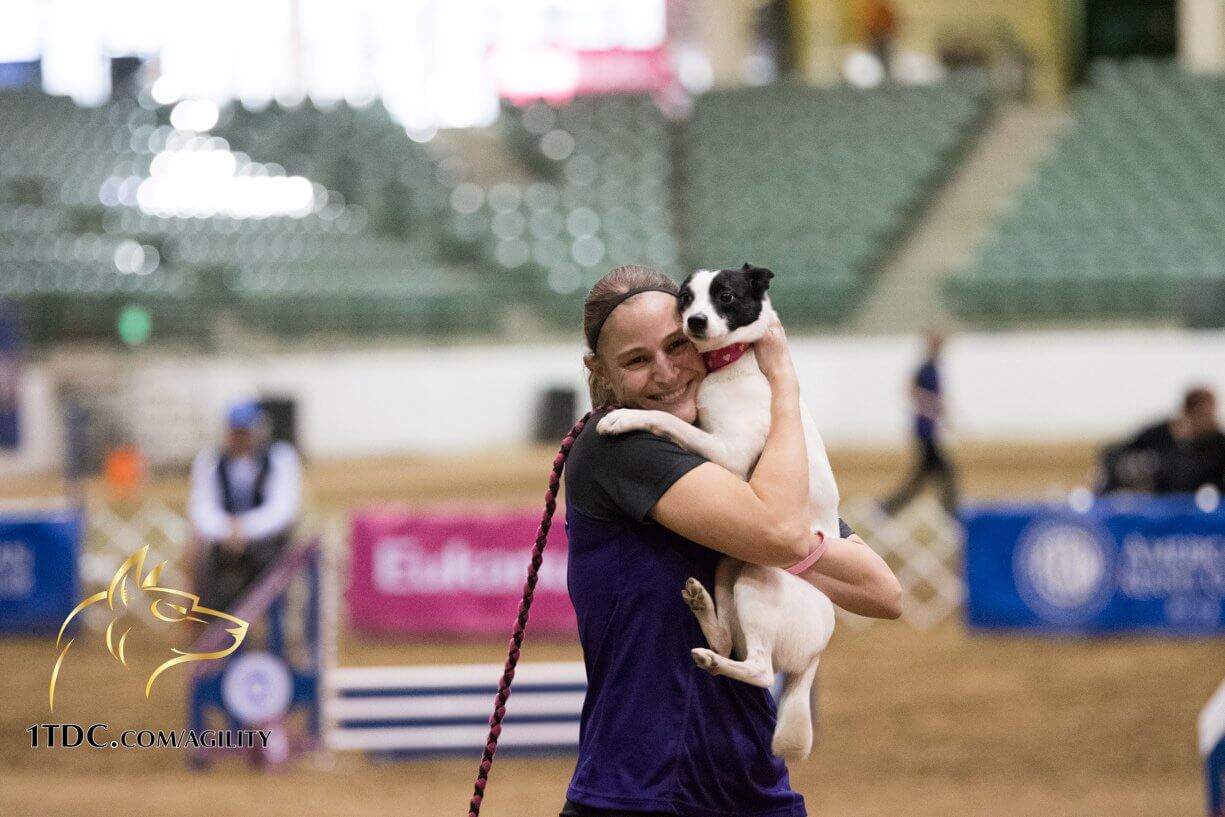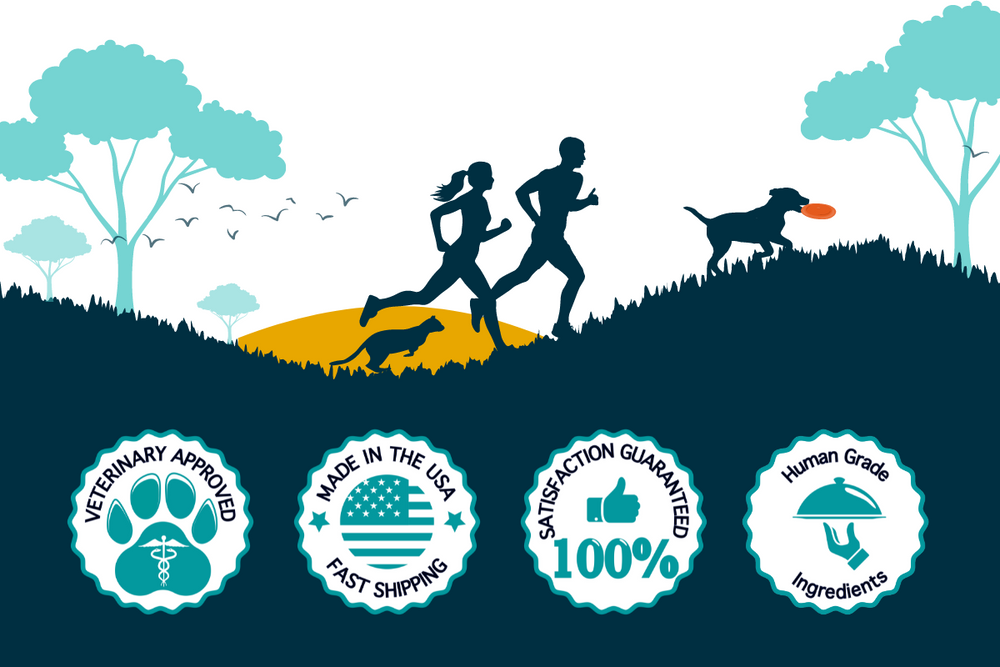But here is what I think is most necessary to know for agility purposes:
- When a dog is running, he is always either on his RIGHT lead or his LEFT lead.
- If the dog is on his right lead, he is turning or is going to turn to the right.
- If the dog is on his left lead, he is turning or is going to turn to the left.
- Even when a dog is running in a straight line, he is still on his left or right lead.
- If a dog tries to turn in the opposite direction of his lead, he is off balance and therefore more likely to slip, knock a bar, or fall.
- If the dog needs to change direction, he needs to change leads.
You can predict a dog’s lead based on your position relative to the dog. Dogs naturally want to move toward us. This means that if the handler is on the dog’s left, the dog is most likely on his left lead because he wants to move toward the handler.
This information helps the handler determine what directions to give the dog on course. Let’s say I know my dog will be on his left lead through a particular section of a course, but the upcoming obstacle is to the dog’s right. I now know that I will need to give my dog a turning cue in order for him to find the correct obstacles.
Knowing what lead the dog is on also helps predict where the dog is going and which way he is turning, and allows the handler to strategize his position on course so that the dog makes the lead changes at the appropriate times.
Leads apply to jumps as well. If a dog is expecting to turn right after a jump, he lands on his right lead. If a dog needs to turn in the opposite direction after a jump, he needs to know ahead of time so that he can plan the lead change before he takes off. Dogs that try to switch leads midair often have harsh landings because they are off balance or knock the bar. Wider turns are also frequently the result of lead problems.
A dog that takes off on its left lead but is trying to make a right turn has to wait until it lands to make the lead change, and this costs yardage and time. If he tries to turn in the air, the bar frequently comes down. Sometimes handlers are surprised when their dogs turn the wrong way after a jump. This is usually the result of a lead-change issue that the handler did not see coming or did not plan for.
I believe some of the most successful agility dogs are the ones that are able to make lead changes quickly and easily. Weave pole entries, for example, require the dog to make fast lead changes independent of which side the handler is on. Remember, it is more natural for the dog to turn toward you, so if your dog needs to make a left-hand turn to enter a tunnel, and you are on his right, the skill is more difficult and will require more complex footwork on the dog’s part; therefore, it will take him more time to accomplish.
A dog’s ability to make easy lead changes is a skill that can be taught and perfected through training. I believe it is best to develop this particular skill early in a dog’s training. Dogs also tend to favor one lead over the other, just as people are either right handed or left handed. It is important to develop the dog’s ability to work on both leads and be able to switch between them in order to make him prepared for what the agility course will demand of him.
In summary, knowing which lead the dog is on will help you with several tasks:
- predicting which way your dog is turning;
- knowing what obstacle your dog is expecting to come next on course;
- pinpointing when you need to tell the dog to change leads; and
- avoiding dropped bars, wide turns, or unexpected “wrong turns.”
Always remember that the dog is on one lead or the other; therefore, he is going to, and only able to, turn in the direction correlated to his lead leg. If you know this ahead of time, you can help the dog prepare for the changes, keeping the dog on course and moving as efficiently as possible.
Want to safely learn how to Tug with your dog: CLICK HERE
1-TDC Oral Health + Mobility Support for Dogs

$32.00
Keep your pet Happy, Active & Comfortable from Head-to-Tail with 1-TDC. This unique supplement is SO effective that it is recommended by TOP Veterinary Experts worldwide to maintain and improve your pet’s health in 4 important areas: Oral Health….… read more









